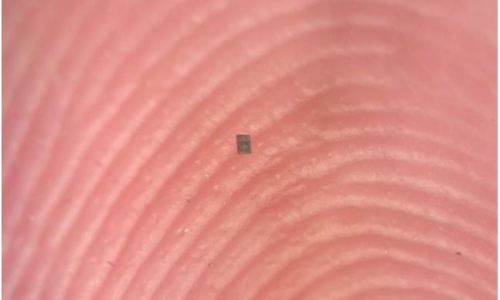


 12:37:57
12:37:57  2024-11-01
2024-11-01  776
776

In the year 1181 CE, the sky exploded.
Well, a part of the sky – a pinprick of nothing suddenly blossoming into visibility, a new, temporary 'guest star' in the constellation of Cassiopeia that astronomers in China and Japan watched and recorded for months.
That star was a supernova, the violent eruption as a dead white dwarf star accrued so much mass from a binary companion that it exceeded critical mass and blew its stack. It's one of vanishingly few such recorded events in human history, a crucial laboratory for trying to understand the way supernova remnants evolve over time.
However, the material ejected by the white dwarf wasn't to be discovered until 2013, expanding away from the site of the supernova in a spherical configuration, a supernova remnant named Pa 30. In 2023, astronomers discovered faint, thin filaments inside the sphere, like spokes connecting the ejecta to the white dwarf in the center.
Now, those filaments have been mapped, and their velocity measured, with the Keck Cosmic Web Imager (KCWI), giving us a new, three-dimensional map of the supernova remnants still blasting out into space, like the head of a dandelion gone to seed.
"A standard image of the supernova remnant would be like a static photo of a fireworks display," says physicist Christopher Martin of Caltech. "KCWI gives us something more like a 'movie' since we can measure the motion of the explosion's embers as they streak outward from the central explosion."
The supernova of 1181 CE, named SN 1181, is a rarity even among supernovae. In Type Ia supernovae, a white dwarf slurps up too much matter, exceeds the critical mass limit, and explodes with enough energy to destroy the star. But there's still a white dwarf at the center of Pa 30.
The Type Ia supernovae that leave behind a 'zombie' star are known as Type Iax, and this is what we're looking at with SN 1181. Astronomers believe that the event was not a typical mass transfer to a white dwarf from a binary companion, but a merger between two white dwarfs, so that's pretty neat.
Led by astronomer Tim Cunningham of the Harvard & Smithsonian Center for Astrophysics, a team of scientists used the KCWI instrument at the Keck Observatory in Hawaii to map the supernova remnant in detail. An accurate map of what Pa 30 is doing now can help astronomers reconstruct what it was like in the past.
The key to this is the way light changes when its source is moving. If a clump of matter is moving towards us, the wavelength of the light it emits is slightly smooshed towards the shorter, bluer end of the spectrum; and light from an object moving away is stretched towards the redder end. Astronomers can study the amount of smooshing and stretching and use it to figure out how fast something is moving through space.
This allowed Cunningham and his team to calculate the speed of the SN 1181 ejecta. They determined that the material is expanding at a rate of about 1,000 kilometers (620 miles) per second. And that piece of the puzzle allowed them to rewind the explosion to when it took place.
"We find the material in the filaments is expanding ballistically," says Cunningham. "This means that the material has not been slowed down nor sped up since the explosion. From the measured velocities, looking back in time, you can pinpoint the explosion to almost exactly the year 1181."
That seems to clinch the connection between SN 1181 and Pa 30. But the research also revealed some new mysteries to unravel.
The study found evidence of a strong asymmetry in Pa 30 along our line of sight. This hints that the supernova explosion itself was asymmetrical. And there's a large cavity in the center of the remnant, around the zombie star in the center. It's also unclear how the filaments themselves formed, after the explosion took place.
"A reverse shock wave may be condensing surrounding dust into filaments, but we don't know yet," says Cunningham. "The morphology of this object is very strange and fascinating."
Reality Of Islam |
|

A tiny robo

By applying

Stanford, C

A new study
 9:3:43
9:3:43
 2018-11-05
2018-11-05
10 benefits of Marriage in Islam
 7:5:22
7:5:22
 2019-04-08
2019-04-08
benefits of reciting surat yunus, hud &
 9:45:7
9:45:7
 2018-12-24
2018-12-24
advantages & disadvantages of divorce
 11:35:12
11:35:12
 2018-06-10
2018-06-10
 6:0:51
6:0:51
 2018-10-16
2018-10-16
 9:39:36
9:39:36
 2022-12-28
2022-12-28
 1:16:44
1:16:44
 2018-05-14
2018-05-14
 8:30:23
8:30:23
 2022-03-03
2022-03-03
 6:28:21
6:28:21
 2022-12-20
2022-12-20
 6:14:3
6:14:3
 2023-01-18
2023-01-18
 9:50:37
9:50:37
 2023-02-28
2023-02-28
 8:19:41
8:19:41
 2018-06-21
2018-06-21
 5:41:46
5:41:46
 2023-03-18
2023-03-18
| LATEST |